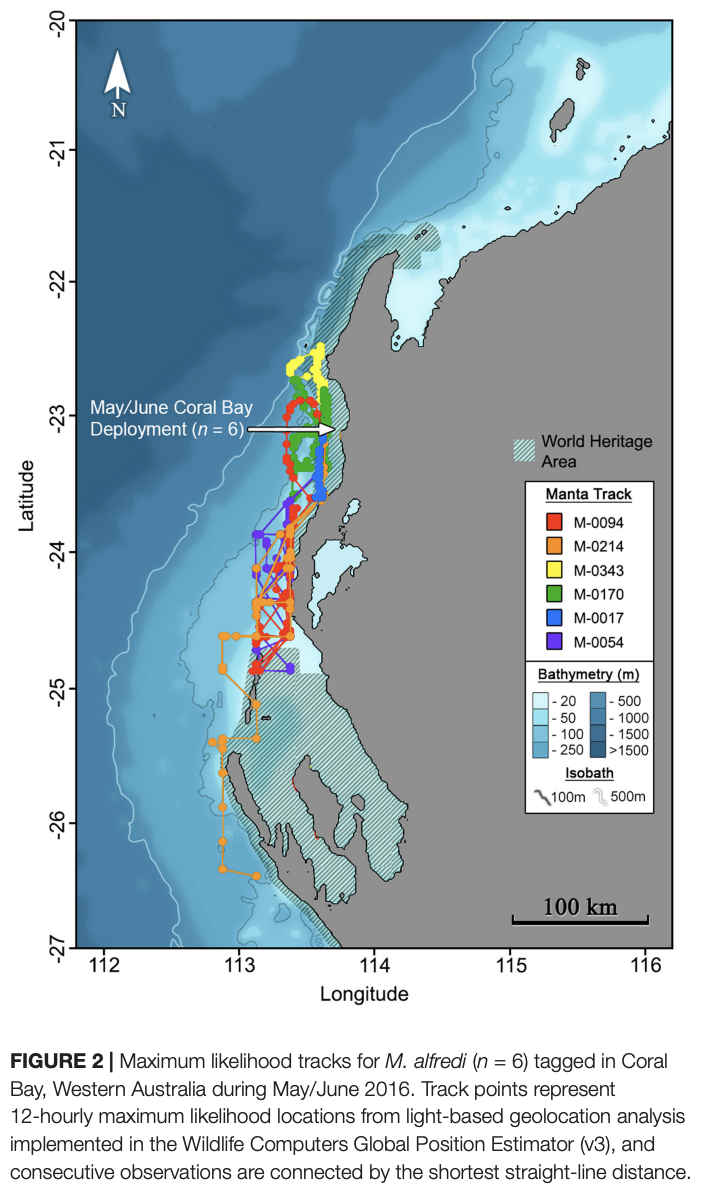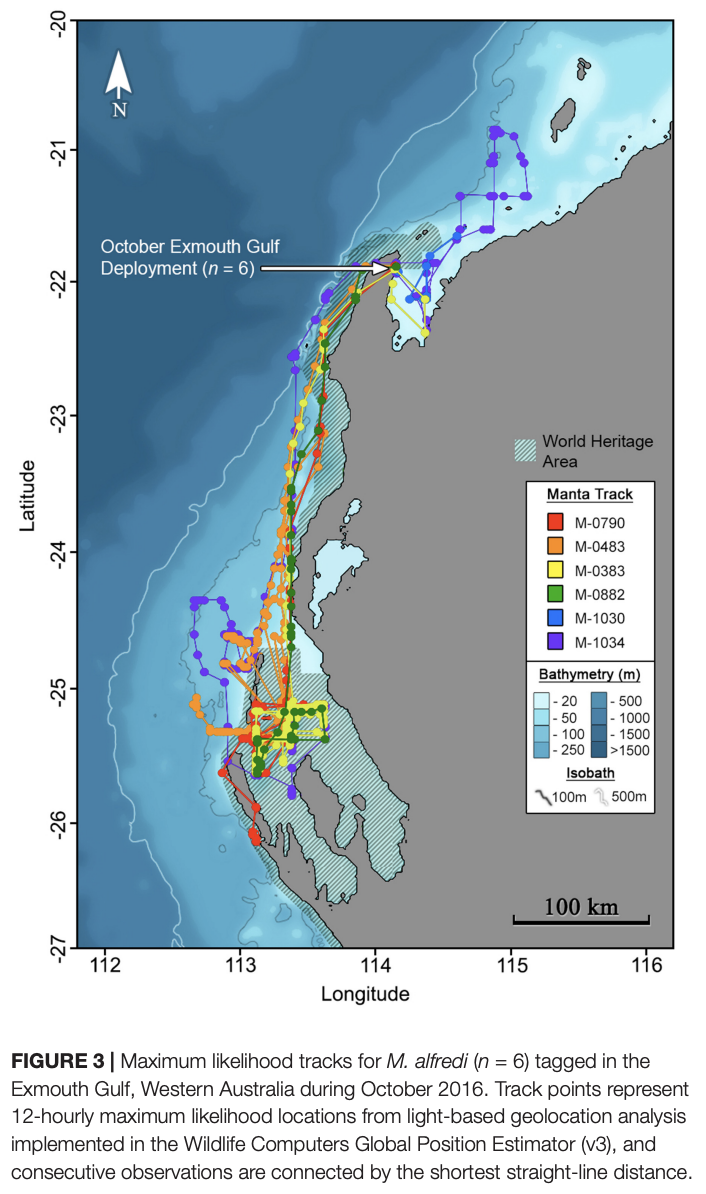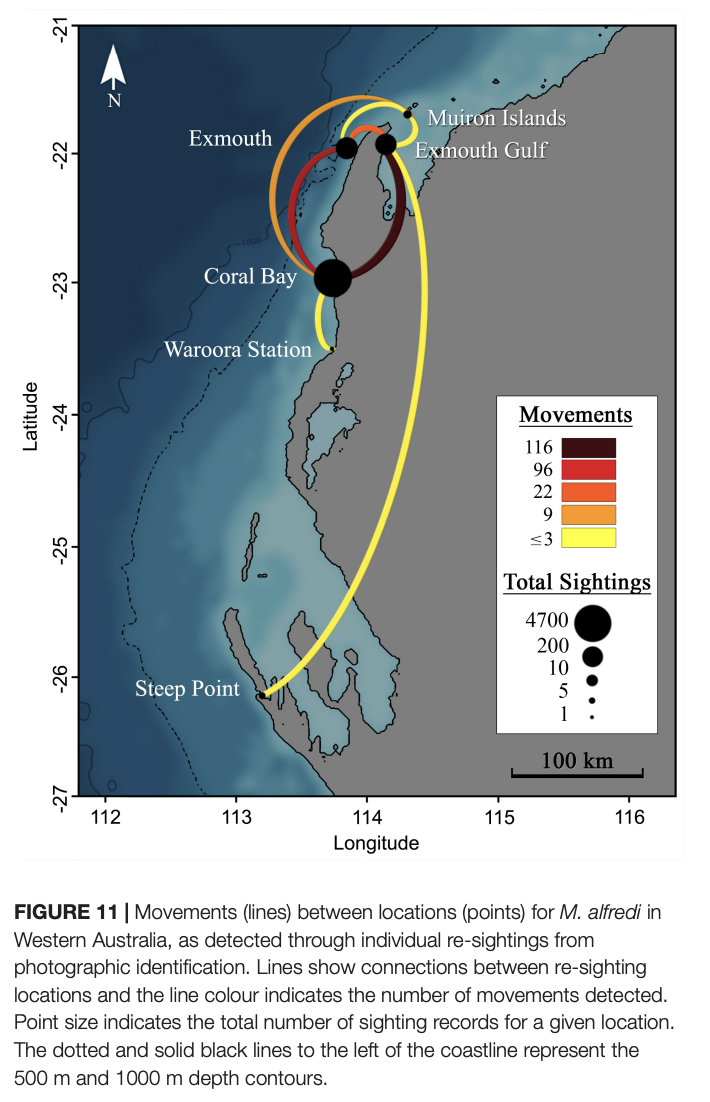Satellite Tagging and Photographic Identification Reveal Connectivity Between Two UNESCO World Heritage Areas for Reef Manta Rays
August 2020
Amelia J. Armstrong, Asia O. Armstrong, Frazer McGregor, Anthony J. Richardson, Michael B. Bennett, Kathy A. Townsend, Graeme C. Hays, Mike van Keulen, Jessica Smith & Christine L. Dudgeon
Keywords: Site affinity • Mobula alfredi • Ningaloo Reef • Satellite Telemetry • Citizen Science
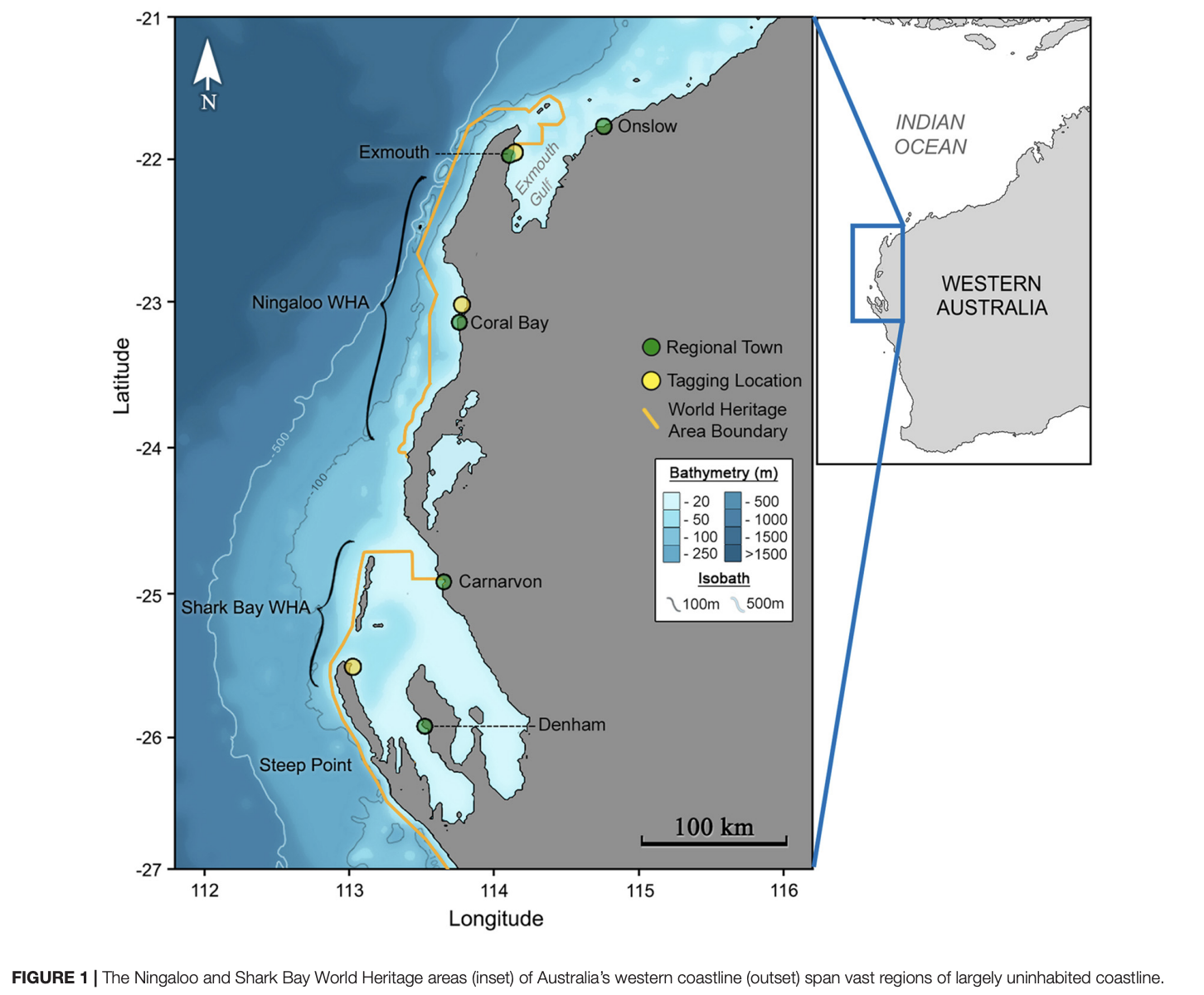
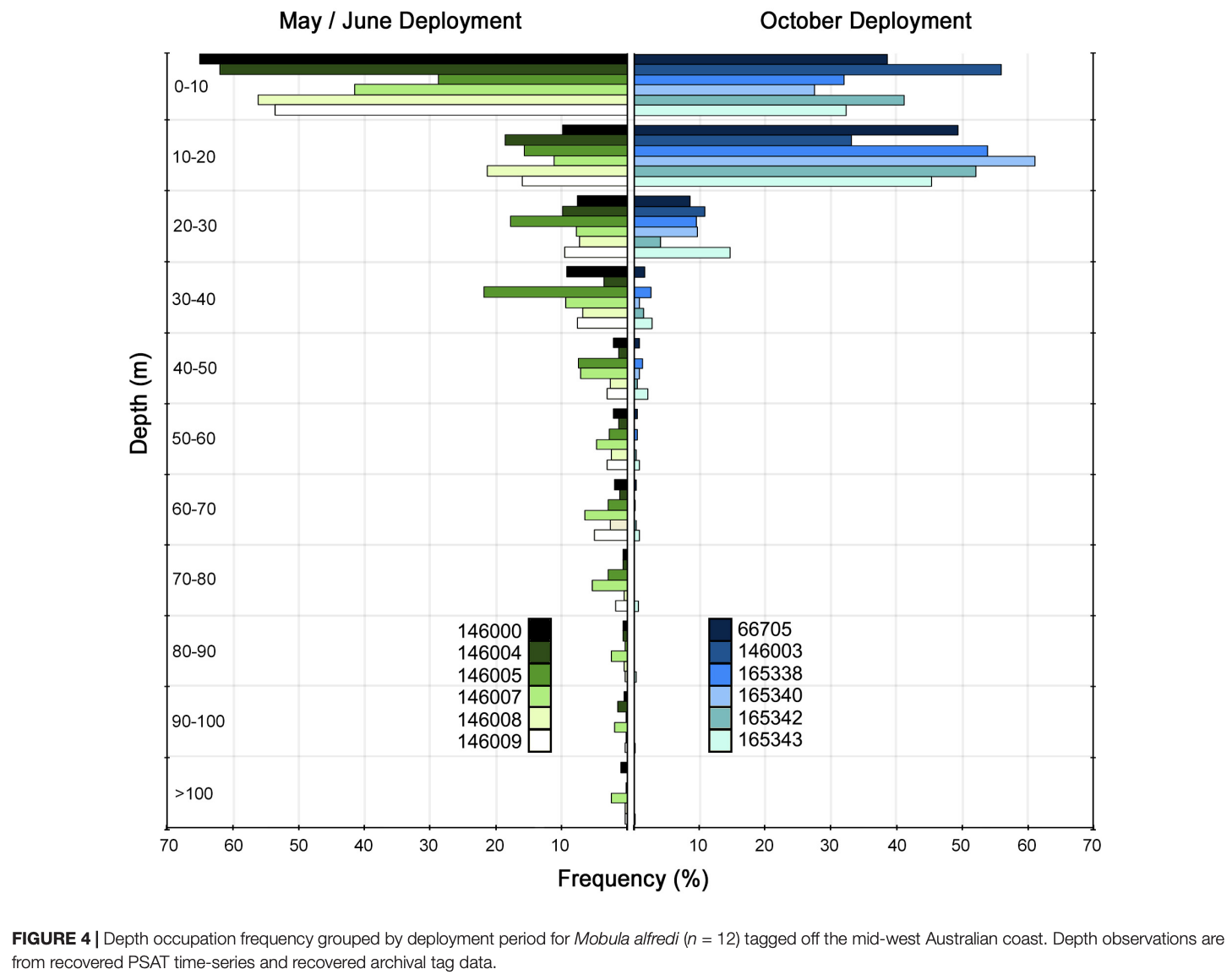
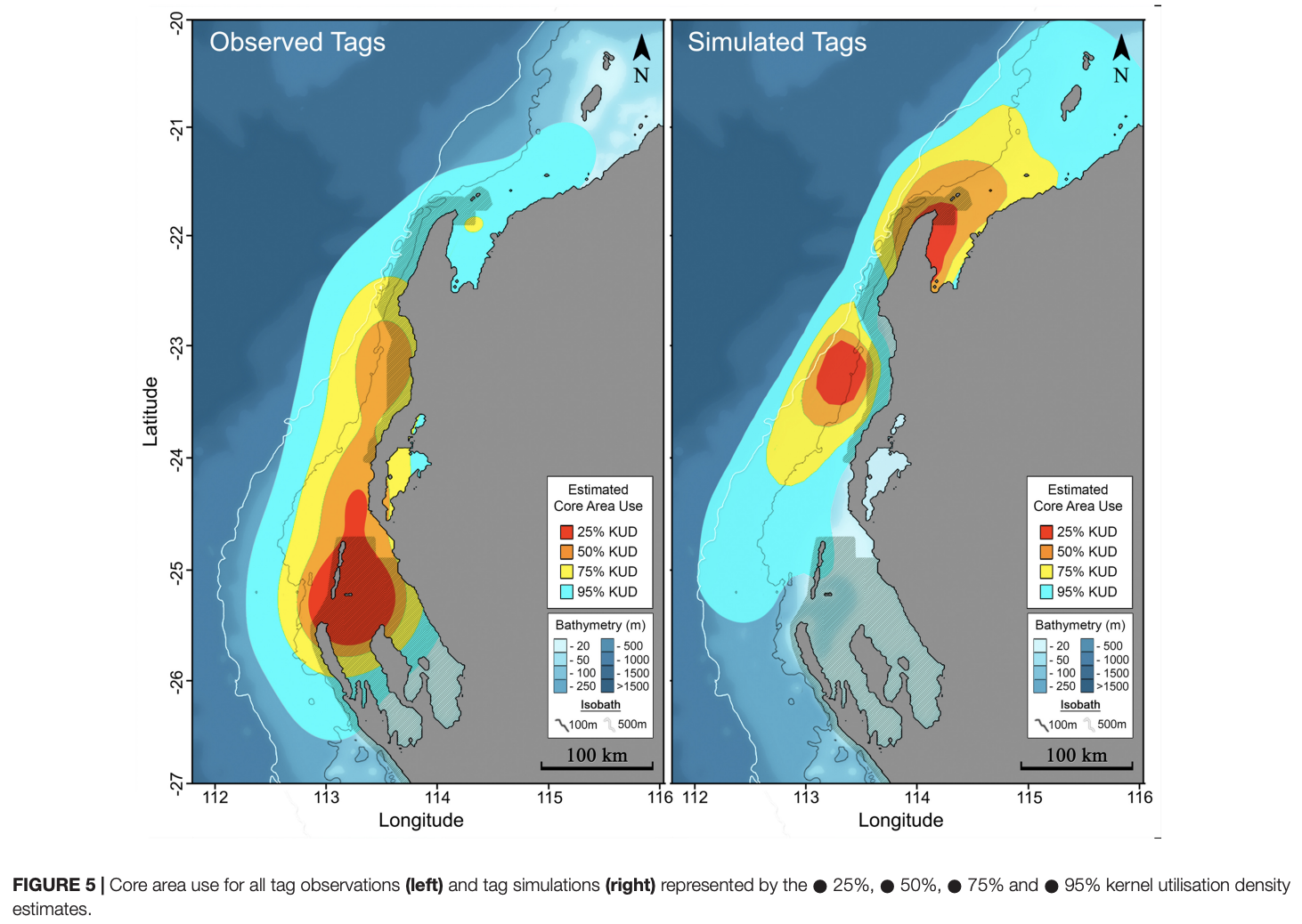
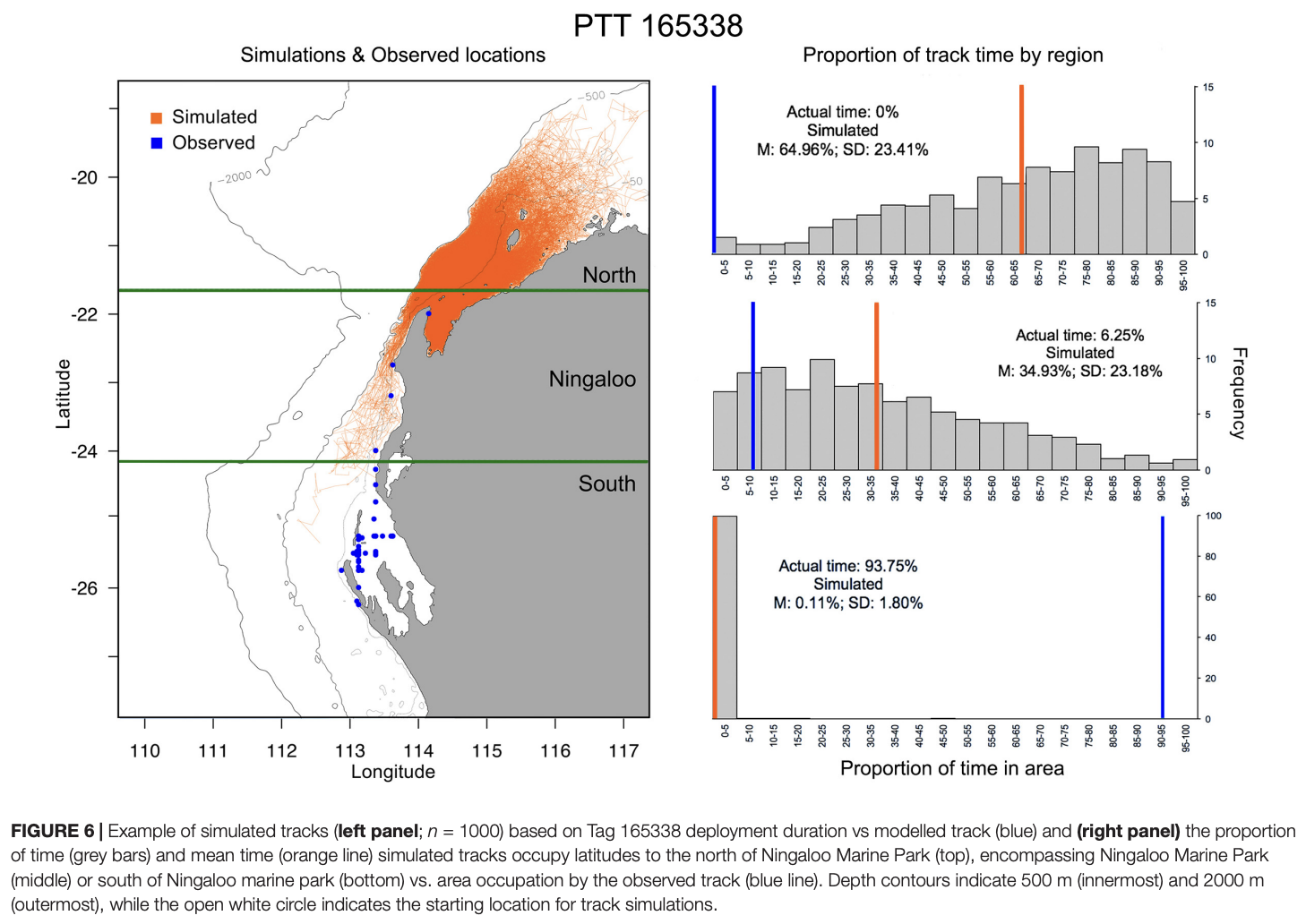
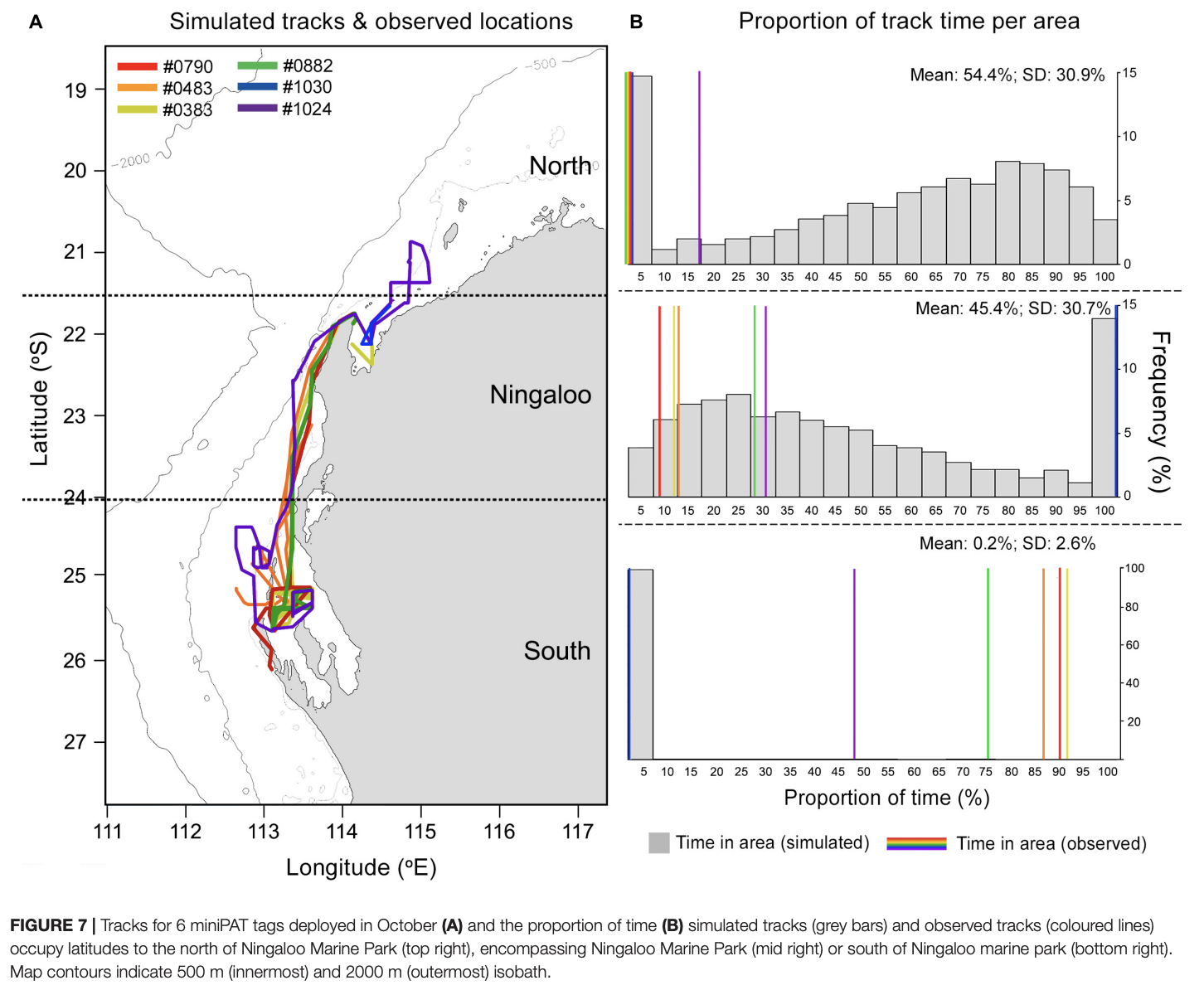
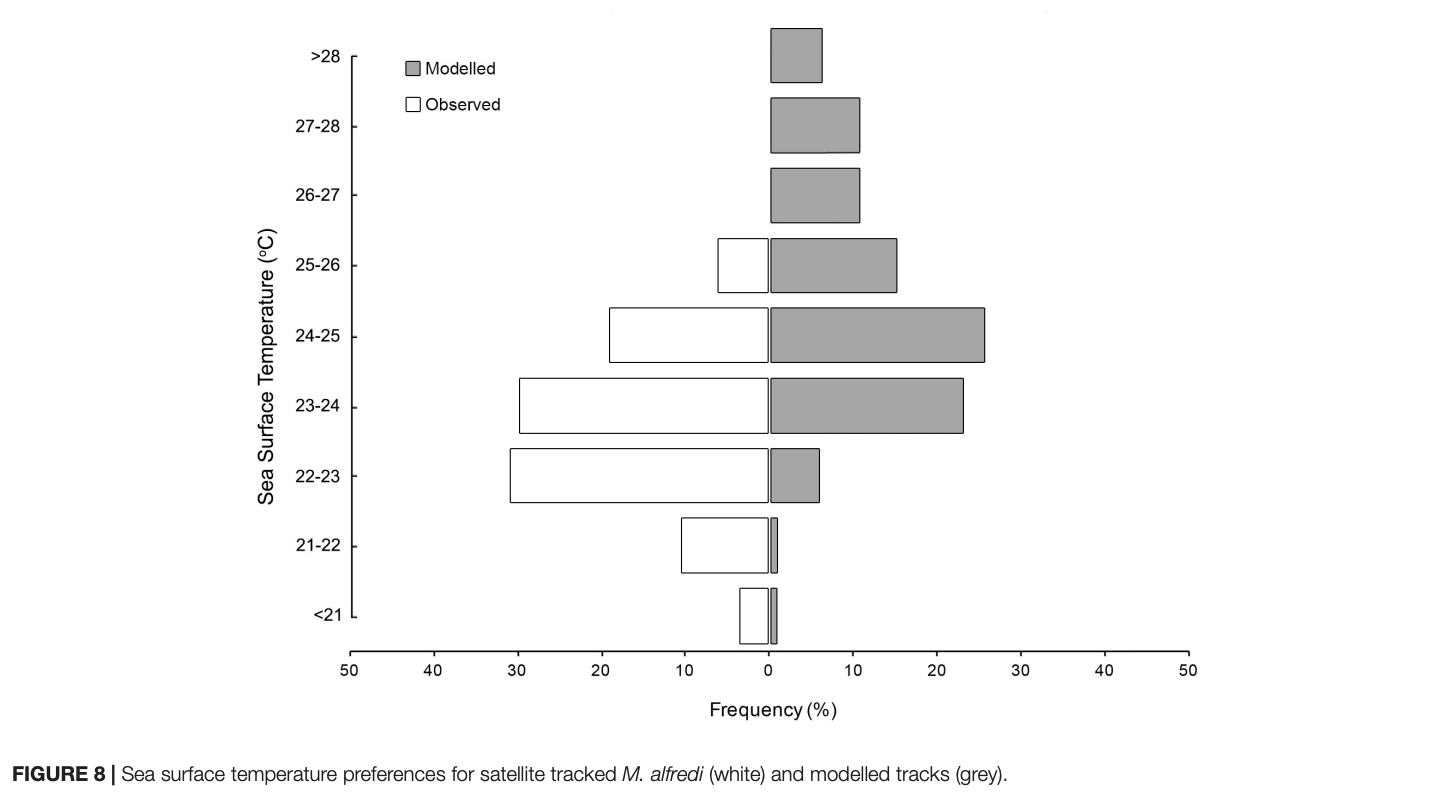
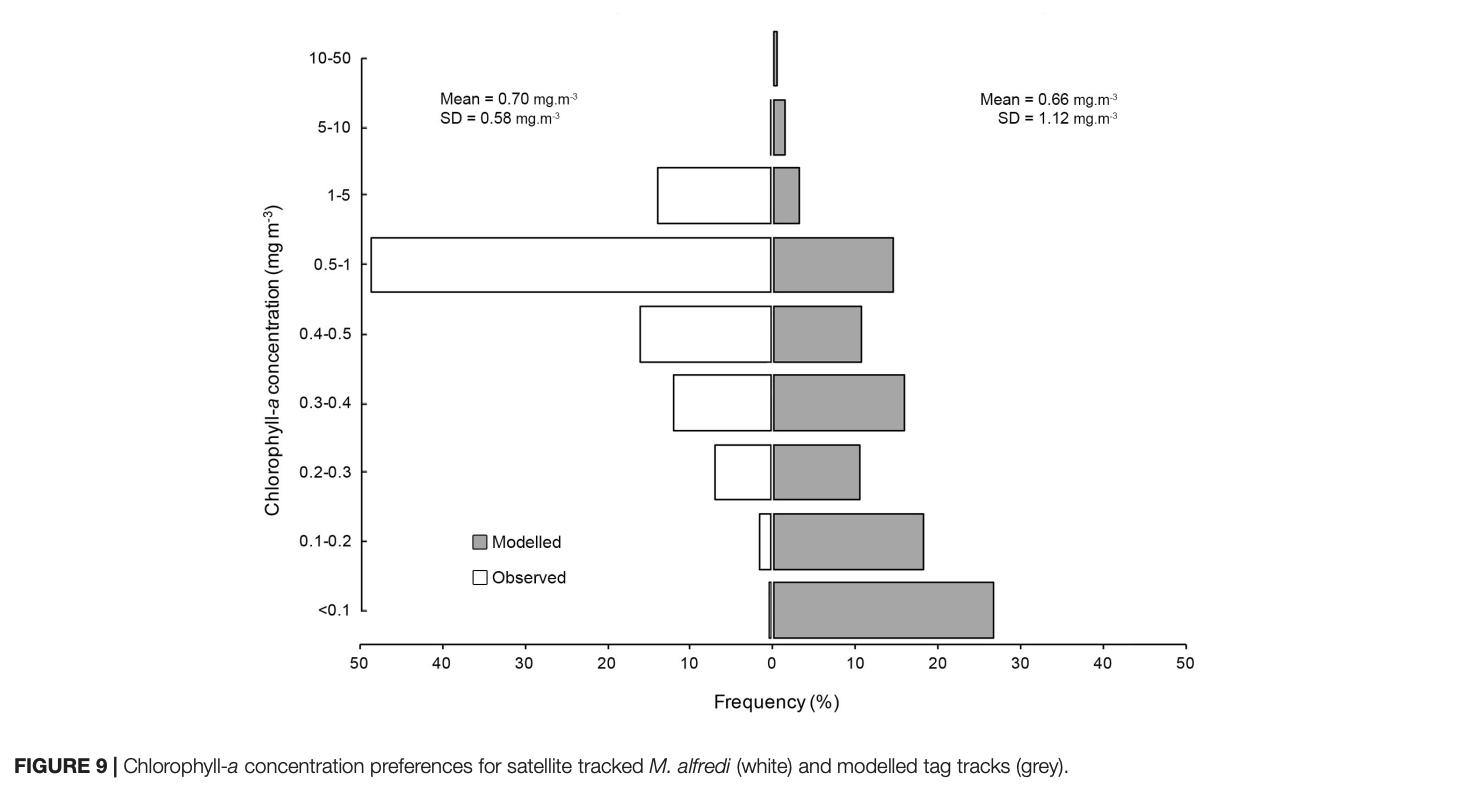
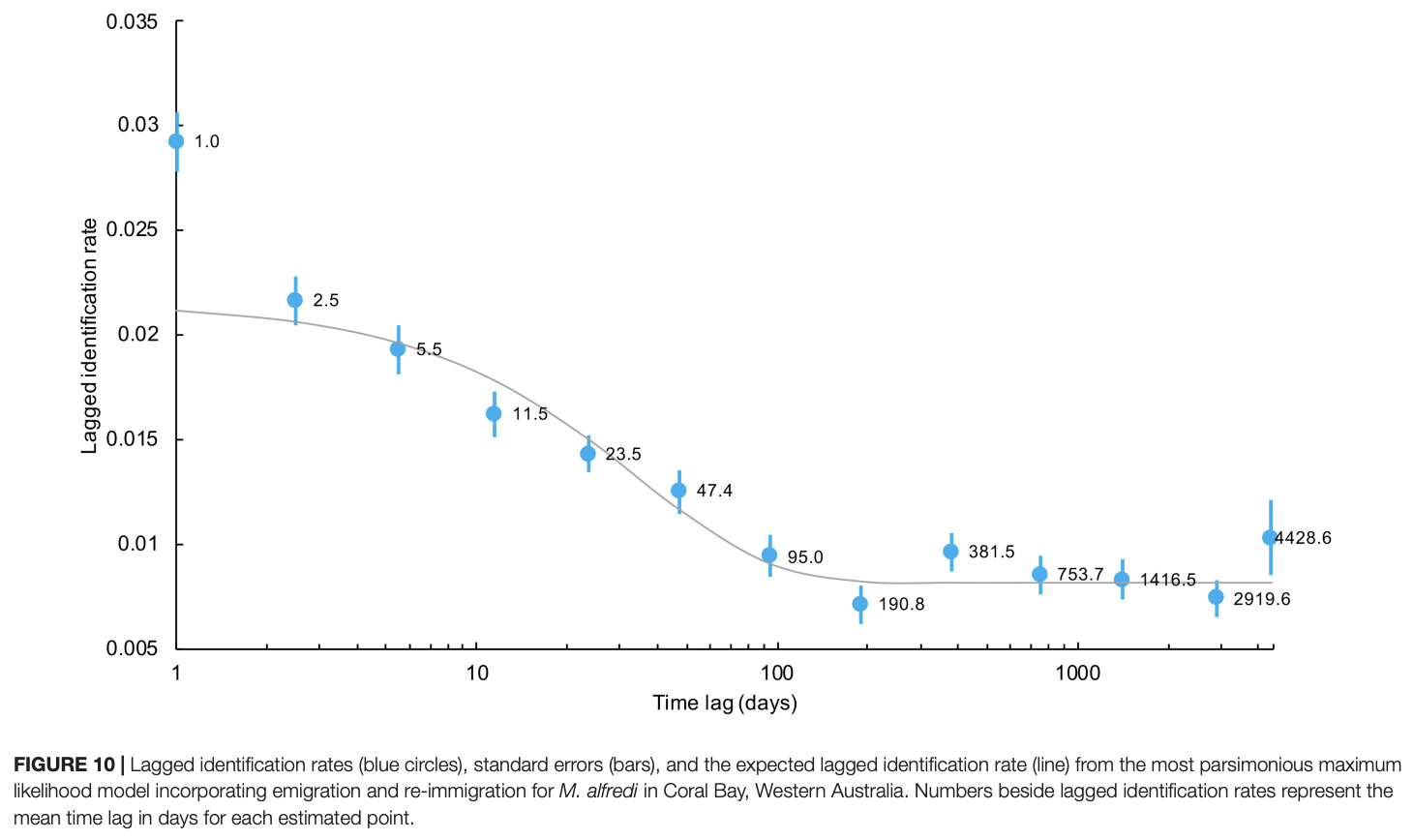
Summary: Reef manta rays (Mobula alfredi) in Ningaloo Reef, Australia, exhibit year-round presence and are important for local ecotourism. However, information about their movements and habitat use is limited. Researchers used satellite tags and photographic identification to study their visitation patterns. The tagged rays preferred shallow depths (< 20 m) and showed directional dispersal towards Shark Bay World Heritage Area. Some individuals displayed long-term site affinity within Ningaloo Marine Park. This study highlights the species' movement range and the potential of marine parks to protect critical habitat for M. alfredi.
Abstract
“Reef manta rays (Mobula alfredi) are capable of long-distance dispersal when habitat is continuous. In the Ningaloo Reef World Heritage Area located on Australia’s mid-west coast, M. alfredi is sighted year-round and is a focal species for ecotourism in the region. Despite value to local tourism and demographic vulnerability to exploitation, basic information regarding M. alfredi movements and area use in this region is lacking. Here we used satellite tags and a long-term photographic-identification database collected by researchers and citizen scientists to examine the species’ visitation patterns and regional space use. Tagged M. alfredi remained in coastal shelf waters, preferentially occupying shallow depths < 20 m (76% of depth observations). Comparison of real tracks against those produced by correlated random walk simulations revealed directional dispersal and connectivity between the Ningaloo and Shark Bay World Heritage Areas. The greatest linear distance an individual moved after tagging was ∼700 km. This movement range is comparable to seasonal M. alfredi migration observed at similar latitudes on Australia’s east coast. Photographic-identification of 1121 individual M. alfredi, from 5146 sighting events, revealed that some individuals exhibited long-term site affinity to locations within Ningaloo Marine Park, with the longest spanning 15.16 years (9.8% individuals > 10 years). Lagged Identification Rate analysis suggested site visitation was best described by a pattern of emigration and reimmigration. While our observations of movement and residency establishes basic information previously unknown for the species in this region, the overlap of core area use with existing UNESCO World Heritage Areas demonstrates the potential for well-positioned marine parks to provide protection of critical habitat for M. alfredi.”
Author Affiliation
School of Biomedical Sciences, The University of Queensland
Project Manta, The University of Queensland
Murdoch University Coral Bay Field Station
Centre for Applied Resource Mathematics, The University of Queensland
CSIRO Oceans & Atmosphere, Queensland Biosciences Precinct
School of Science and Engineering, University of the Sunshine Coast
School of Life and Environmental Sciences, Deakin University
Environmental and Conservation Sciences, Murdoch University
Funded by
Australian Research Council
Austral Fisheries
TG Kailis Marine Conservation Fund
Murdoch University Coral Bay Research Station
Ningaloo Marine Interactions
Lady Elliot Island Eco Resort
University of Queensland Scholarships

